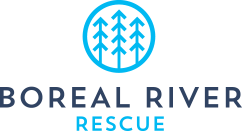3 tips for teaching the most essential river skill: Stoke
By Willa Mason, Boreal River
As whitewater instructors or trip leaders, it’s our job to teach paddlers all the essential hard skills. To make that happen, we need paddlers who want to return to the river time and time again.
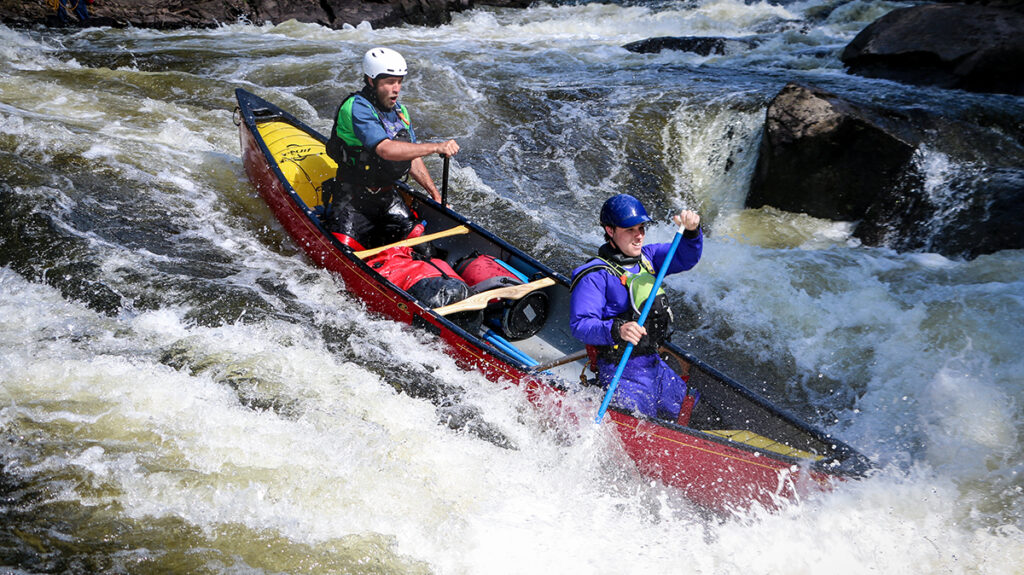
Kayakers and canoeists alike, we become small variables in an immense river system, and it’s often the factors beyond our control that help make paddling fun. Different water levels, weather, emotions, and unpredictable environmental factors keep us on our toes. However, as instructors and leaders, we can deliberately manipulate the variables within our control to set paddlers up for success and leave them wanting more.
1. Reassurance is key
After a big kersplash, a swimmer finally pops up, gasping for air. Greeting them with a big smile will immediately remind them that this seemingly stressful situation can actually be fun. Know that they will be watching your response to see if they should be scared. Let your reaction remind them that swimming is expected and is an important part of becoming comfortable in whitewater. It’s part of our job to normalize this process.
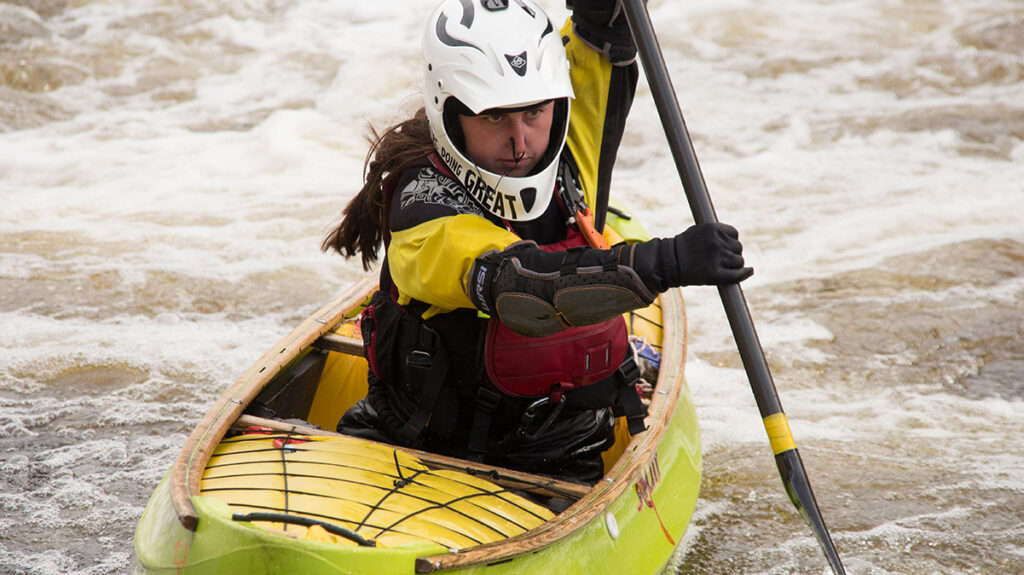
Willa Mason paddling a set of rapids. Photo credit: Alex Guimont
Pushing beyond our comfort zones is humbling and can leave even the most confident learners feeling vulnerable. One unintended facial expression from a leader could make a paddler feel belittled or judged. Paddlers are more likely to push themselves and learn more quickly when they know they are supported, encouraged, and set up for success. As a whitewater canoe instructor, empowerment through challenge is always the foundation of my teaching approach.
2. Location, Location, Location
By lunchtime, a paddler trying out a new skill could be either, bored, discouraged, or full of stoke. Pick the location that is most likely to lead to the desired outcome. An experienced paddler might know if a swim was caused by human error or just bad luck (that beautiful green wave came crashing down at just the wrong time!). On the contrary, it’s easy for a new paddler to assume that they’re upside down “because they suck,” and that can deplete their confidence. I always want a paddler to taste success before our first snack break, so I pick the location accordingly.
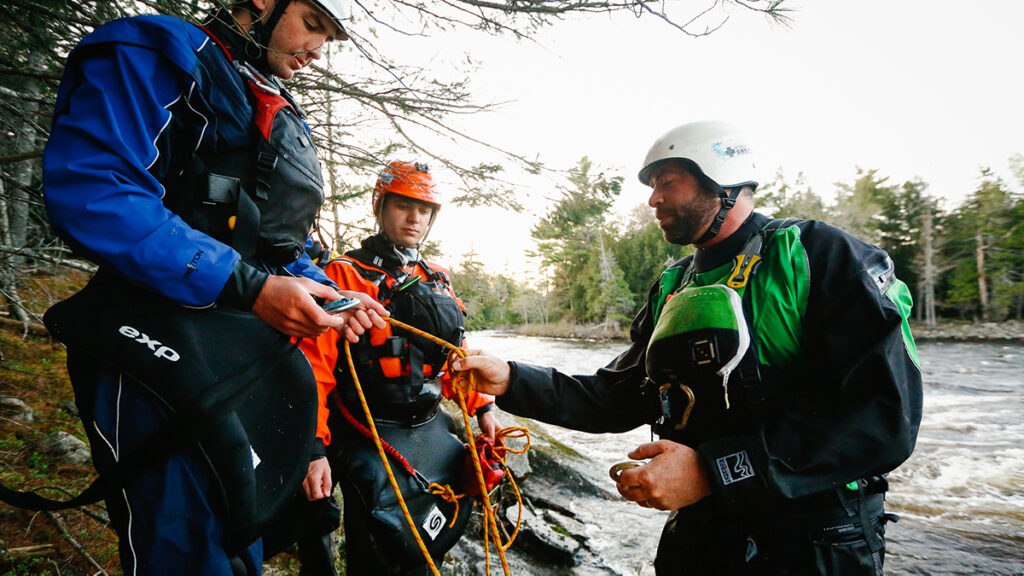
If a paddler is itching for more, games and drills can push them to explore new skills. It’s easy to make friendly whitewater more challenging, but it’s much harder to make big rapids more friendly if a student is in over their head.
To find the dream teaching location, look for a patch of water significantly easier than what you anticipate the paddler is ready for. Ideally, this is some flatwater with a narrow current nearby featuring clean eddylines and a variety of features to explore. An array of options will prevent both you and your student from feeling dismayed if they aren’t quite at the level you thought they were, while also guaranteeing access to learning opportunities and confidence-boosters, as needed.
3. Leave the past in the past
If this section of river reminds you of that epic day where you paddled legendary waves: don’t mention it. “Back talk” is what I call the act of bringing past experiences into a present one.
While past adventures helped to build your experience, let that experience speak for itself through the confidence and grace with which you facilitate others’ whitewater experience.
Some learners may have specific questions about your past river experiences, but stories of glory may accidentally overshadow someone’s own feelings of success. For example, it likely won’t help anyone to hear about how your others students miraculously rolled their kayaks on their first try.
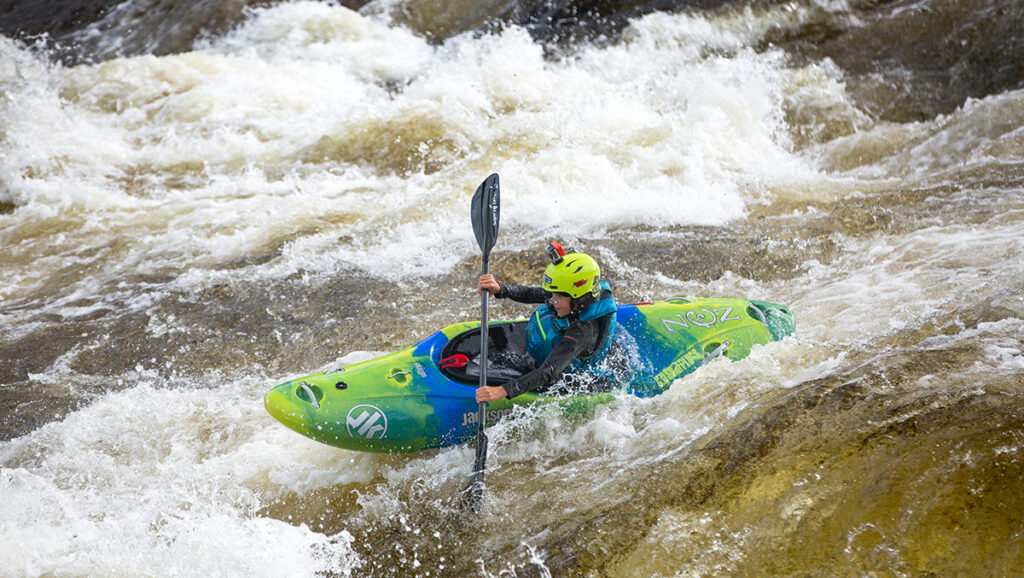
On the other end of the spectrum, comical stories of other people messing up may make learners ultra self-conscious. They should be confident that they won’t end up the subject of a joke in the next class you teach. Reflect on how each individual learner needs to feel in order to challenge themselves. Being selective about back talk will keep the focus on the individual and their present learning curve, while eliminating the question of whether their learning curve is progressing at the “right” speed.
Skills-based instruction is essential for safely navigating whitewater, but the right location, attitude, and support will make people want to get out on the river. Perfecting their technical skills can come later, with practice. Indeed, the first building block for learning to paddle is wanting to come back.

